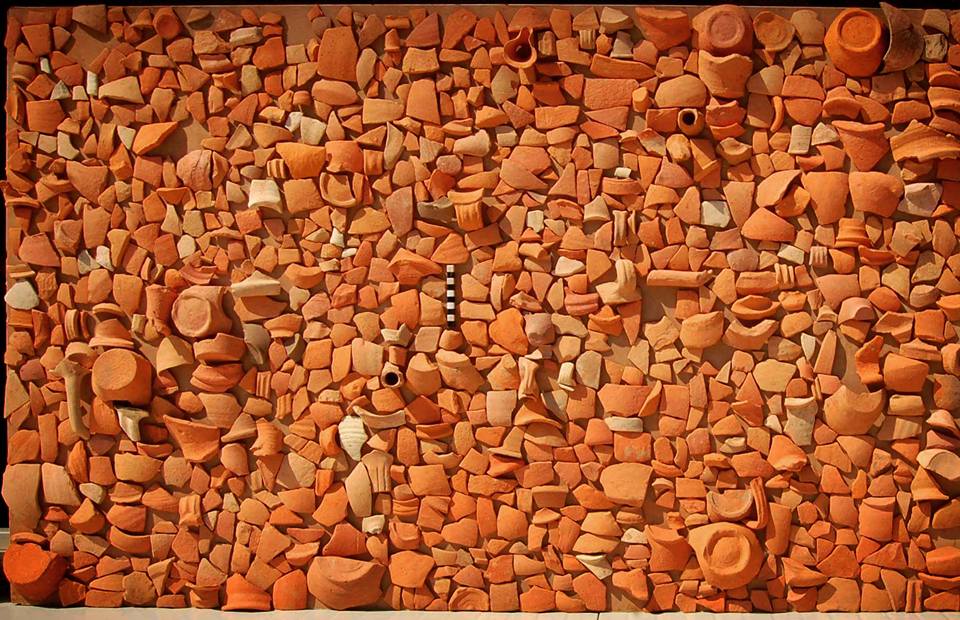
Every day is getting shorter, never seems to find the time …. for pottery classification.
Yes, I know, pottery classification is of fundamental importance for the comprehension and dating of the archaeological contexts, for understanding production, trade flows and social interactions, but it also requires complex skills and it is a very time consuming activity, both for researchers and professionals.
To be honest, I always been able to assess the rough date of a pottery assemblage giving a cursory glance at it, thanks to a long practice in archaeological survey, but I must admit that I get bored easily during the quantification activity. During my ten years’ experience in Italian development-led archaeology, pottery quantification was rarely paid for what it’s worth in hours of work. So to recognise and to quantify potsherds was not only time consuming, but it was often a loss of money for my business.
From the beginning of July, thanks to a curious trick of fate, I’m working at the MAPPA Lab (digital Methodology APPlied to the Archaeology) of the Dipartimento di Civiltà e forme del sapere, of the University of Pisa, on a research project called ArchAIDE.
ArchAIDE is a Horizon 2020 supported IA project aimed to support the recognition and classification of archaeological potsherds with innovative computer-based tools, able to provide the user with features for the semi-automatic description and matching of potsherds over the huge existing ceramic catalogues.
These objectives will be achieved through the development of an as-automatic-as-possible procedure to transform the paper catalogues in a digital description, to be used as a data pool for search and retrieval process; a tool (mainly designed for mobile devices) that will support archaeologists in recognising and classifying potsherds during excavation and postexcavation analysis, through an easy-to-use interface and efficient algorithms for characterization, search and retrieval of the visual/geometrical correspondences; an automatic procedure to derive a complete potsherd’s identity card by transforming the data collected into a formatted electronic document, printable or visual; a web-based real-time data visualization to improve access to archaeological heritage and generate new understanding; an open archive to allow the archival and re-use of archaeological data, transforming them into common heritage and permitting economic sustainability.
Perhaps, you are thinking we are a bit too ambitious. Maybe you are right, but I believe that this tool will be able to revolutionise archaeologists habits, behaviours and expectations, meeting real user needs and generating economic benefits, reducing time and costs, but it will also be able to create societal benefits from cultural heritage, improving access, re-use and exploitation of the digital cultural heritage in a sustainable way.
Do you think is an hard task for a small Lab? Yes, definitively.
In fact, we only coordinate the project, but the hard stuff will be done by our partners coming both from research Institution and from SMEs: Consiglio Nazionale delle Ricerche – ISTI (Italy), Tel Aviv University (Israel), University of York (United Kingdom), Universitat de Barcelona (Spain); Universitaet zu Koeln (Germany); Baraka Arqueologos s.l. (Spain); Elements - Centro de gestio i difusio de patrimoni cultural (Spain); Inera srl (Italy).
Stay tuned, we will inform you about our progresses.
Credits: Photo by Michele Menchini